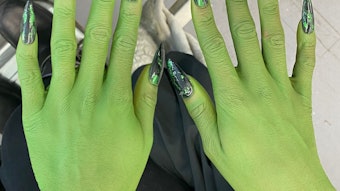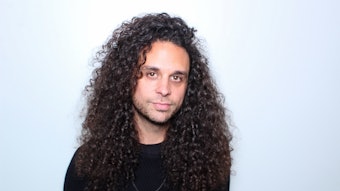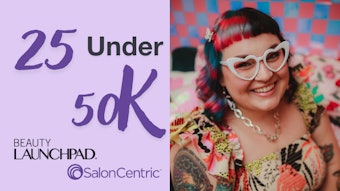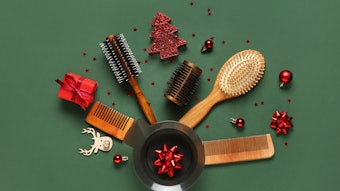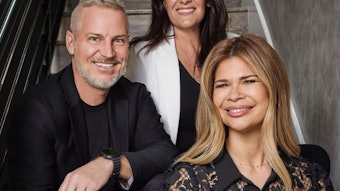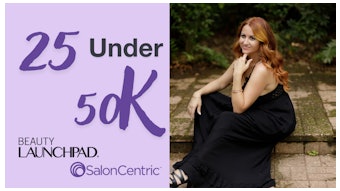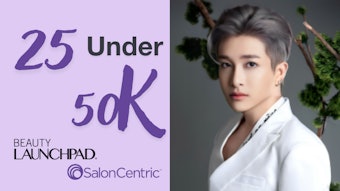When it comes to lash styling, there’s a distinct difference between custom lashes and a one-size- ts-all approach. In order to give your clients a personalized lash experience, you need to be able to identify a style map. Here, Sugarlash PRO founder and CEO Courtney Buhler explains how to measure the client’s entire eye area, compare overall uniqueness and then use that “lashformation” to create a tailored result.
Rich texture is naturally present and should be observed before beginning any application. By examining the natural lashes, you can identify the length, thickness and curl that each client was born with. Using your knowledge of weight and visibility to enhance the natural texture, you can maximize your client’s lash line and overall wear time. First, you must determine the shape, plane and set of the eyes.
Step 1: Set
Measure the distance of one eye and compare it to the width between both eyes.
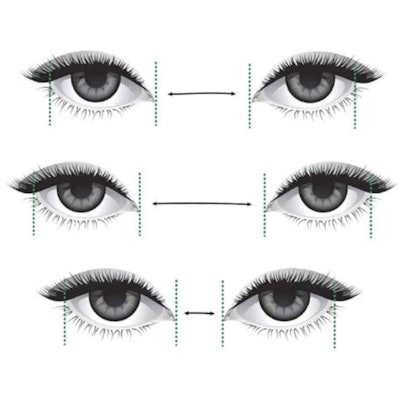
RELATED: How Lash Lifting and Tinting Help Your Clients and Boost Your Bottom Line
Top: Even-Set - The distance between the eyes is equal to the length on one eye.
Middle: Wide-Set - The distance between the eyes is longer than the length of one eye.
Bottom: Narrow-Set - The distance between the eyes is shorter than the length of one eye.
Step 2: Plane
Draw an imaginary horizontal line from the inner corner to the outer corner of the eye.

Top: Even Plane - The inner and outer corners lay on an even plan.
Middle: Ascending Plane - The outer corner sits higher than the inner corner.
Bottom: Descending Plane - The outer corner sits lower than the inner corner.
RELATED: Our 4th Annual Tool Guide Featuring the Latest and Greatest Innovations
Step 3: Shape
Find the width-to-height ratio.

Top: Almond - The width is double the length of the height.
Middle: Round - The width and height are even.
Bottom: Exotic - The width is more than double the length of the height.
RELATED: 7 Hot New Mascaras for Every Lash Artist
Once you have the set, plane and shape, then you can choose the best style to create balance.
Set
Wide-Set: The longest area of extensions should be concentrated inward to create the illusion that there is less space between the eyes.
Close-Set: A kitten or cat eye styling works best to pull the eyes apart and make them look more balanced.
Even-Set: No corrective work needs to be done.
Plane
Ascending Plane: This type of eye can support more length at the outer edge without looking droopy or closed off because of the natural height of the outer eye.
Descending Plane: Add length at the middle of the eye (the highest point of the curve), and taper it down drastically towards the outer eye. This will give the effect that the eye is tilted inwards and it will look more even-planed.
Even Plane: Work with the natural arch point of the brow for the most natural shape. Sweep the length across the mid- to outer-eye and taper both the inside and outside edges of the eye.
Shape
Round: The only shape that needs extreme caution with lash placement is round eyes. Too much curl or height will make the eyes look shocked or surprised all of the time. Use a B curl only, and bring the length toward the outer eye, away from the mid-eye, to elongate the round shape into more of an almond appearance.
Hooded: These eyes need some extra lift to cover the heavy lid and make them look refreshed. Use an L or L+ curl (mix with a C curl for softness) to go over the hood crease.
There are so many things to know when it comes to styling—this is just the beginning! It’s also important to take into account facial shape, bone structure and brows to determine the ultimate styling. If you’re unsure about your styling skills, enroll in a styling course.
[Images: Courtesy of Sugarlash Pro]
